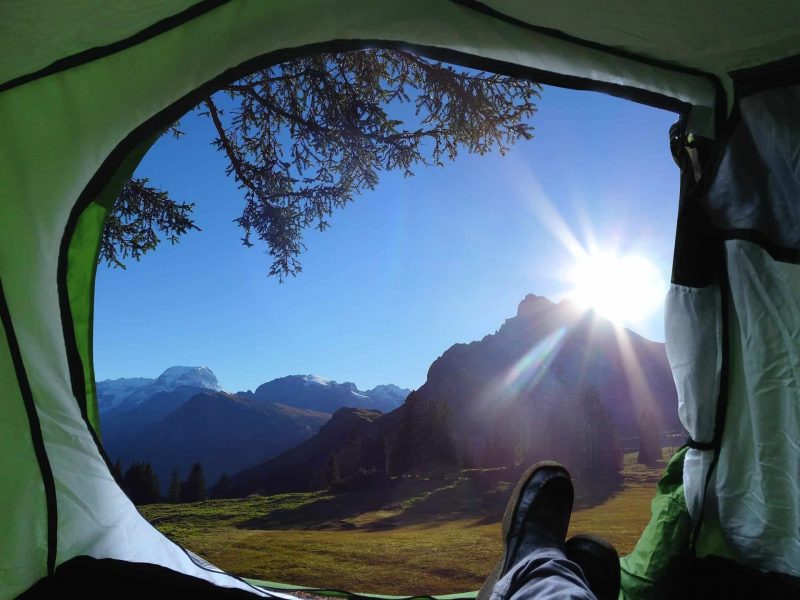Want to keep your family safe on your next camping trip?
Families all over the world pull out their camping gear every year and head into the woods for quality time with nature. But here’s something you may not know…
The Problem
503 people were injured by their tent from 2010-2015 with the main cause being “assembling/disassembling my tent”. But that’s only talking about tent-related injuries. What about everything else?
Family camping tent safety is more important than you might think. With over 30,000 camping injuries that were treated in ER’s last year, being prepared with the right knowledge could be the difference between a wonderful memory and a trip to the hospital.
But that’s ok…
By following some simple safety tips, you can keep your family safe and help everyone have an amazing time.
What you will discover:
- Tent setup safety essentials
- Safety with kids around camping gear
- Weather and environmental safety tips
- Emergency preparedness for family camping
Choose Your Campsite Like Your Family’s Safety Depends On It
Because it does.
Family camping tent safety starts even before you get to your campsite. How you choose a family tent and pick a place to set it up makes a big difference in your overall experience.
Here’s what to look for when you are choosing your campsite:
- Level ground with decent drainage
- Away from dead trees or overhanging branches
- At least 15 feet minimum from any water
- No broken glass, sharp rocks, or debris where kids will be playing
This might seem like a lot to think about, but take your time and pick a good site. If you arrive before it gets dark, you can scout out a great spot and be sure to set up safely. Trying to set up a tent in the dark with kids that are cranky because they don’t nap in the woods is just begging for trouble.
Tent Setup Safety: Where Most Accidents Happen
Ah yes, the good old statistics we talked about at the beginning of this post.
Most tent injuries happen during setup and takedown for good reason.
Here’s the deal:
Tent poles are under a lot of tension. When they slip out of your hands, getting smacked in the face with one of those puppies really hurts.
The smart way to set up safely is:
- Keep kids at a distance during initial setup
- Never rush – tired parents make mistakes
- Check zippers and guy lines before your first night
- Set up at home first so kids know what to expect
Assign older kids specific tasks like organizing the camping gear or setting up camp chairs. The more you can keep them away from the tent assembly process, the better.
Weather Safety: When Mother Nature Gets Moody
Weather changes quickly in the outdoors and you are literally surrounded by it when you are camping. When kids are involved, it’s not a good idea to think “being prepared is optional.”
Lightning safety:
Never stay in your tent when a thunderstorm hits. Tents provide ZERO protection from lightning strikes. Have a plan for where your family will go in the event of lightning. If there is a storm, don’t hang out by a lake or other open water source.
Wind and Temperature management:
Kids can’t regulate their body temperature like adults. High winds can make tent stakes a serious projectile hazard.
Always:
- Stake down everything properly
- Use guy lines even if it seems calm
- Layer your kids clothing so they can add and remove easily
- Skip cotton clothing – it stays wet and cold
Fire and Equipment Safety: Protecting Little Hands
Fire is amazing to kids. Flames dance and pop and you can roast marshmallows to make s’mores.
But that marshmallow stick can burn right through a kid’s hand.
Fire safety is extremely important when you are camping with kids. Here are some tips.
The 15-foot rule:
Keep all tents, gear and sleeping bags at least 15 feet away from the fire. Sparks travel further than you think and tents catch fire almost instantly.
Kids and fire safety:
- Physical boundaries are better than verbal instructions
- Constant supervision around fires
- Fire extinguishing supplies should always be close by
Equipment hazards:
Kids should be kept far away from hot surfaces, fuel containers, and sharp tools.
Carbon Monoxide: The Silent Killer
This one is a big deal. Don’t think carbon monoxide poisoning isn’t an issue because of bad air where you live. It kills campers every year.
NEVER bring these items into your tent:
- Portable heaters
- Camp stoves
- Lanterns that burn fuel
- Grills or barbecues
Why this matters:
A father and his 7-year-old son died from carbon monoxide poisoning during a Cub Scout camping trip. They brought a heater into their tent.
Better to be cold than dead. Bundle up with layers and a good sleeping bag. Keep all fuel-burning equipment outside.
Emergency Preparedness: Hope for the Best, Plan for the Worst
When you are camping with kids, being ready for an emergency isn’t paranoid, it’s parenting.
Have the following safety gear and take all the necessary precautions to be ready for whatever nature throws at you.
- Well-stocked first aid kit with bandages and pain relievers
- Emergency communication method – cell phone service can be spotty or non-existent
- Emergency contact information for local authorities
Kid-specific safety measures:
- Bright, reflective clothing so kids are easily visible
- Whistle for each child – 3 short blasts is the universal signal for distress
- Buddy system for bathroom trips and short distance walks
- Clear boundaries about where kids can and can’t go
Teaching Kids Camping Safety Without Scaring Them
Kids learn better when they are engaged instead of scared.
How you teach your kids safety is just as important as the rules themselves.
Make it age appropriate:
- Younger kids: stay where Mom and Dad can see you
- Older kids: Teach them how to identify hazards and make good decisions.
Use the teaching opportunities:
- Show them how to identify poison ivy.
- What to do if they feel lost (stay put, blow whistle).
- Why do we never eat wild berries?
Common Tent Hazards You Might Not Think About
In addition to all the other dangers that exist in the outdoors, there are tent-specific hazards worth considering.
Tent safety basics:
- Pinched fingers in zippers. Happens all the time, especially when kids are bouncing around and getting excited.
- Tripping hazards from guy lines and stakes
- Sleeping arrangements – Don’t stuff the tent so full of people that kids trip over each other in the dark.
Wildlife prevention:
Store all food, toiletries, and scented items in bear-proof containers or your vehicle.
Making Safety Fun Instead of Scary
Kids are more receptive to learn when they are engaged instead of frightened.
Safety strategies:
- Practice setting up camp in your own backyard before taking the kids.
- Practice emergency drills, but make it a game.
- Safety scavenger hunts to identify potential hazards around camp
Make safety feel like being part of the “expert camping team” instead of a laundry list of don’ts.
Creating Your Family Safety Plan
Every family camping trip is different and every family needs to have their own safety plan based on their ages, experience, and abilities.
Before you leave:
- Review basic first aid with all family members.
- Assign age-appropriate responsibilities to each child.
At the campsite:
- Establish clear rules immediately upon arrival.
- Do a safety walk around the campsite with your kids.
Wrapping it all Together
Family camping tent safety doesn’t have to be complicated or overwhelming. It’s about being prepared, staying alert and teaching your kids to make smart decisions when they are in the outdoors.
Let’s review the key points:
- Choose your campsite carefully and arrive with daylight.
- Set up your tent safely, away from hazards
- Keep kids at a safe distance from fire and equipment
- Never bring fuel-burning equipment inside your tent
The goal isn’t to eliminate all risk – that’s impossible. The goal is to intelligently manage risk so your family can make amazing memories outdoors.
With the right preparation and knowledge, camping is one of the safest activities your family can do together. Just remember to plan ahead, stay alert and prioritize safety.
Your future self (and your kids) will thank you for it.



